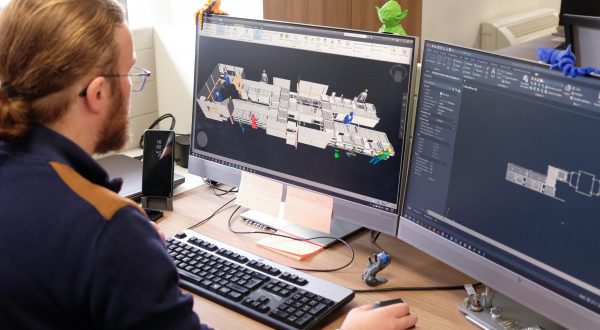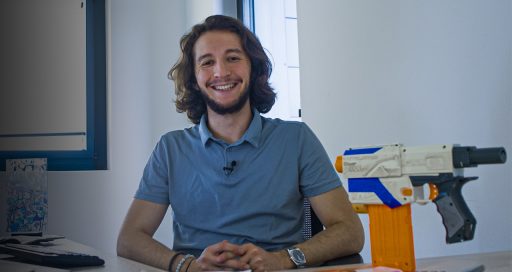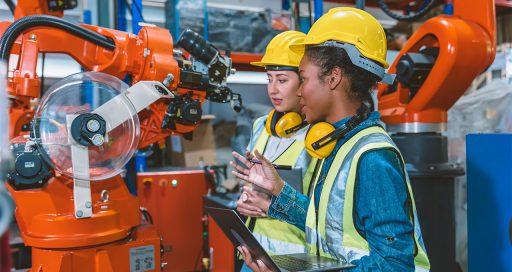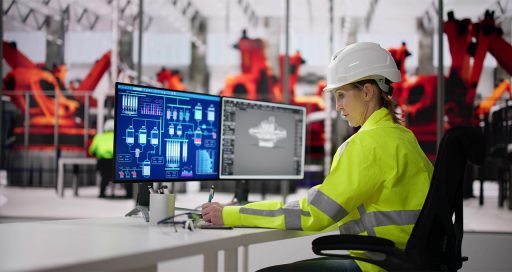“The future of industry lies in adapting to on-demand manufacturing”
Reading time: 5 min
Nuscience, a company specialising in animal feed supplements, developed its ‘factory of the future’ , Belgium, in partnership with Actemium. They received the renowned Belgian “Factory of the Future Award” in February 2017, thanks to a good collaboration between all partners. Nuscience Group Chief Operating Officer Chris Mercier describes the project.
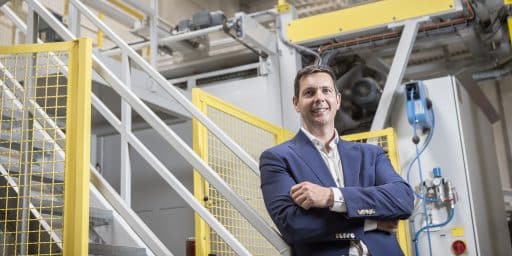
What does your company do and what does it bring to the market?
Chris Mercier. Nuscience is a global player specialising in animal feed supplements. We produce pre-mixes, concentrates, mineral mixes, and additives, in addition to feed for young animals to support their healthy growth. In our market, our proactive approach to R&D sets us apart. We are a subsidiary of the Royal Agrifirm group in the Netherlands and can work with the other Agrifirm subsidiaries to test and develop new solutions and share a wide range of data to boost innovation.
Last year, Nuscience won the Factory of the Future Award in Belgium for its Drongen factory. How does that production unit exemplify the factory of the future?
C.M. When you undertake to build a new factory, the first thing to remember is to include the latest technologies. Even if this comes from outside your own eco-system. I myself, together with a team of experienced colleagues, worked for five years on the design and build project for the Drongen factory, which opened in October 2015. It provided an opportunity to experiment with new technology at all levels. This is not necessarily more expensive, especially if you take a long-term approach.
What were the main innovations at the Drongen factory?
C.M. We won the Factory of the Future Award based on the level of automation at our site. The innovations we introduced included the use of data to look for the ‘golden batch’, video replay, a sophisticated maintenance tool, and alarm management, an automated on-demand product distribution process for our operators (which is in very widespread use at e-commerce companies like Amazon but not previously used in our sector). The result is a profound optimization of the complete installation.
More broadly, what are the major changes taking place in the move to the industry of the future?
C.M. Clearly, the main changes are automation, robotisation, and the use of big data. They point the way forward. First they overcome human error, which is still widespread, and then they eliminate the most unpleasant tasks. They also enable us to be very flexible so as to meet increasingly specific customer requirements. Our customers, for example, have their own formulas for given products. We therefore have to be able to change the manufacturing process on demand. That is where the future of industry lies.
What role will humans play in the factory of the future?
C.M. Manual operators will always be needed to manage unusual or unexpected operational and technical situations. Similarly, people will be needed to maintain the machines, resolve technical problems, and analyse the data required to ensure proper operation of the factory.
You are working with Actemium. How would you define your relations?
C.M. I started working with Actemium in 2012, particularly on a revamp for our factory at Utrecht in the Netherlands. Actemium’s main quality is its openness to innovation. The minute you put forward an idea, the Actemium people start looking into how to implement it and how to work with you to develop it. Their approach is resolutely focused on co-development. The goal is not to keep an idea to oneself but to build on cooperation to go further and faster. This mutual trust is key for a successful partnership.
Were Actemium’s international capabilities helpful?
C.M. Very much so. In late March 2018, we began a joint project with their teams in Belgium and Spain, the goal being to re-design the software systems at our plant in Toledo (a similar roll-out to our project in Belgium). They work together easily within their own network. The software and energy divisions thus work closely together. Lastly, their project management method is very efficient. They are very good at time and project management, and they let you know when the slightest problem crops up. This is a major advantage when you are managing a large project such as designing and building a plant.
12/04/2018


